Huang Qichun's Shell Temple
About the Artist/Site
South of Taizhong, the west coast of Taiwan is in large part devoted to fishing and to the harvest of the oysters and shellfish so beloved by the Taiwanese. Huang Qichun is a fisherman, but rather than fishing for comestible fish, he specialized in raising exotic species destined for personal aquariums. In order to satisfy his clients and enable them to decorate their aquariums, Huang also furnished them with empty shells, colored stones, and pieces of coral. While this professional activity necessitated a certain artistic sensibility, it wouldn’t have necessarily predisposed him to become the creator of the strangest construction that I saw during my entire visit to Taiwan.
After the death of his wife some thirty years ago, and in order to not be separated from her, Huang built her a tomb in his garden, just behind their home. As she had been particularly pious in life, he also decided to consecrate a temple for her; not to honor her, precisely, but to enable her to pray where she was because, according to Taoist beliefs, the spirits of the dead come back to earth to visit the living with whom they were close.
As he was not rich, he set about constructing the building with his own hands and with the means available to him. He had had no previous experience in masonry or in carpentry, so rather naturally he began to build without any particular plan, simply using those materials at his disposal, and those which his neighboring oyster and shellfish cultivators provided to him. A strange construction therefore arose from the earth, decorated with corals and a wide variety of shells, and embellished with the remains of multicolored religious statues that had been destined for the dumps. The exterior is entirely composed of wild oyster shells, which explains their large size. It is enclosed within a metal structure evocative of scaffolding, erected in order to protect passersby should some elements of the decoration become dislodged and fall, because Huang admits to not being completely confident about the solidity of his construction.
The objects that form the interior decoration are a mixture of mythological characters and of dream images related to Taoist beliefs, as well as representations of Huang’s own personal visions. The site is separated into different spaces. Past the entrance door, which is heavily decorated with rocks and shells, a first courtyard covered in trees constitutes a sort of open-air vestibule that provides access to the temple itself. It is guarded by eighteen Luo han figures which, according to Taoist mythology, are religious disciples from the next world who are in charge of maintaining order both in hell and in paradise. Although Taoist temples often have a similar uniformed army, with arms and armaments, here Huang has represented them with nude torsos, each demonstrating different kung fu movements, which he himself had learned while in the military service. Only their faces, which he says he didn’t know how to sculpt, are covered in recycled masks, which heighten the strange appearance of these figures. The temple itself, in a square form, is comprised of a central room dedicated to the veneration of Wang Gong, one of the most important earth gods of the Taoist pantheon.
Even more interesting is the gallery that encircles this central room on three sides. Here one finds the most surprising chimeric images that human imagination has ever conceived. These are the Qi ling, mythological animals who were protectors of the earth. These are very expressive and are richly covered in an astonishing variety of shells and coral (which bring to mind the colorful baroque creations of French-Algerian artist Paul Amar). Unfortunately, the gallery also includes several statues of a rather kitsch appearance, representing the diverse goddesses that one finds in numerous Taoist temples across Taiwan.
In the part of the temple dedicated to Wang Gong one finds a small stairway; this leads to a subterranean corridor that links the temple to Huang’s commercial space, and this part of the site is independent from the temple itself. The length of the 20- to 30-meter corridor is entirely decorated with representations of visions that appeared to Huang in his youth as a result of a tragic event. While swimming with several friends in the nearby sea, he was carried away by breaking waves and was saved in extremis from drowning. Having lost consciousness, he recounts how dragons and phoenixes (who rule over the seas and the atmosphere) rescued him from death. They also appeared to him again later while he was constructing the temple, and asked him to represent them as part of the decorations. The corridor is therefore dedicated entirely to them.
The ceiling is completely partitioned off and is composed of flowery images created from shells. The roof is partially comprised of elements of broken ceramics and of statues with defects that Huang recycled in order to enhance the decoration. The most interesting part represents a sort of boat prow decorated with a phoenix, which gives the entire building a massive form, and the appearance of a vessel ready to ship off to some secret destination known only to its creator.
~Remy Ricordeau
Translated by Jo Farb Hernández
Map & Site Information
, 105
tw
Latitude/Longitude: 24.0306902 / 120.4256805
Nearby Environments


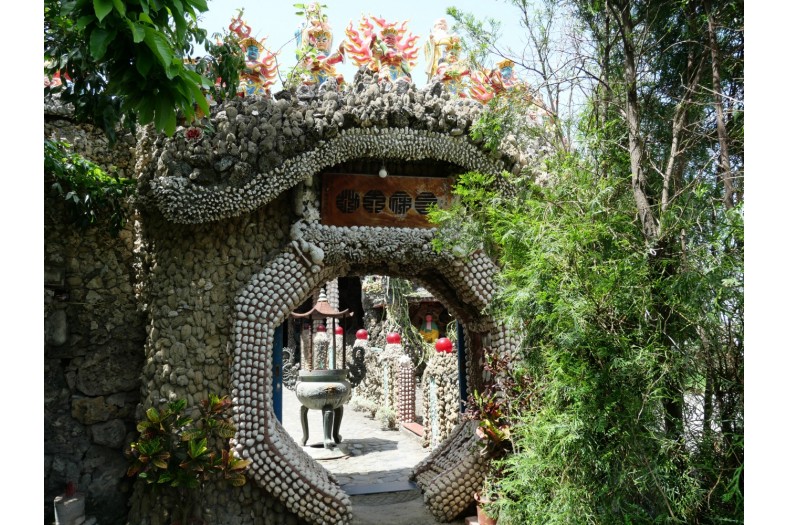
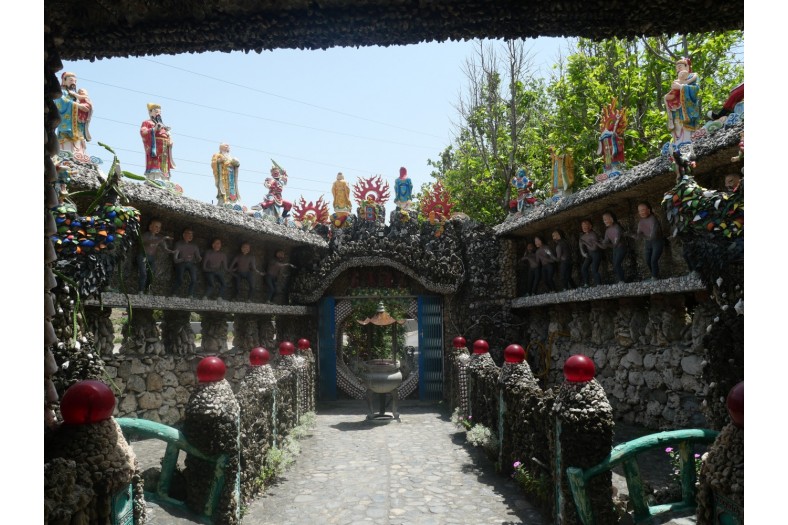
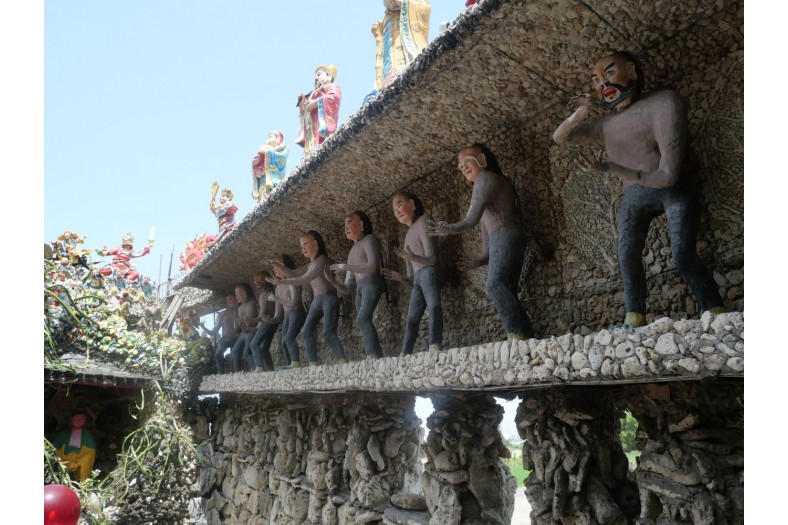
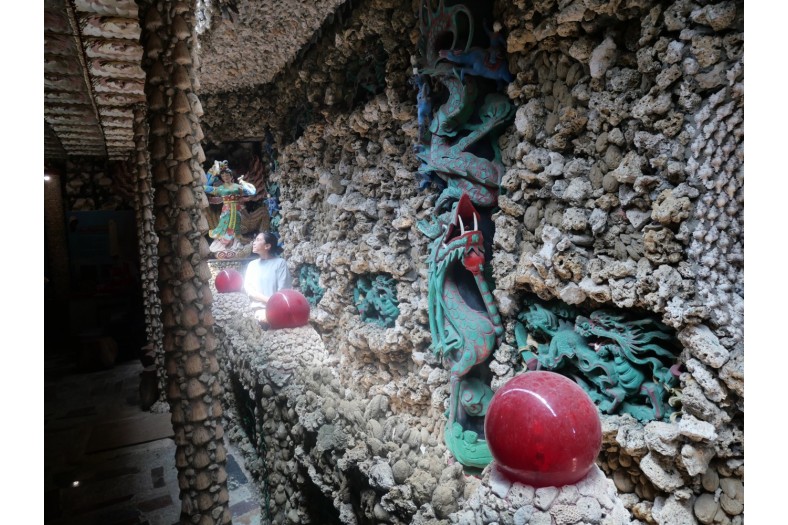

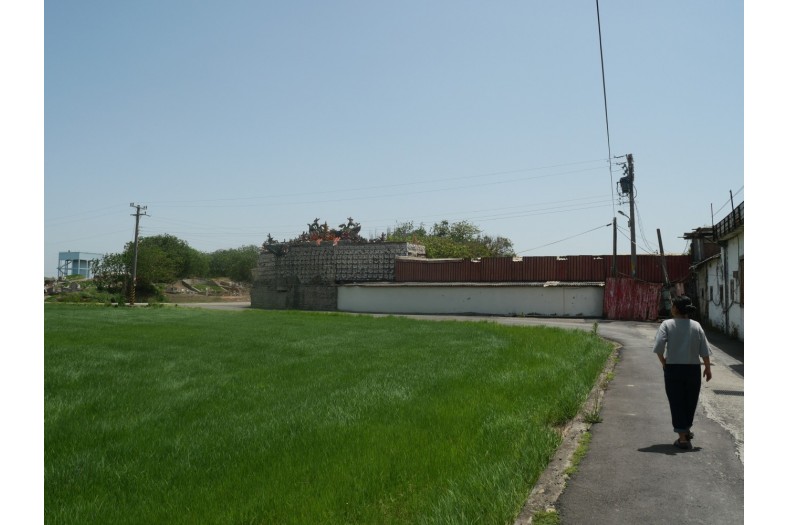
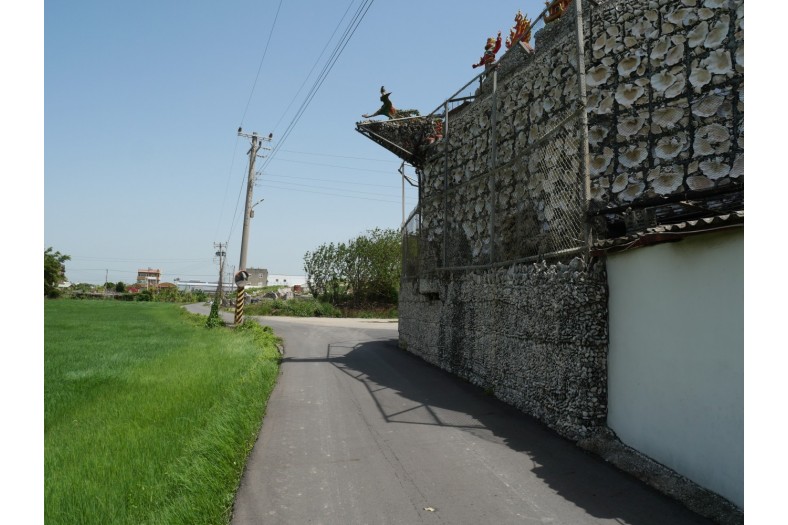
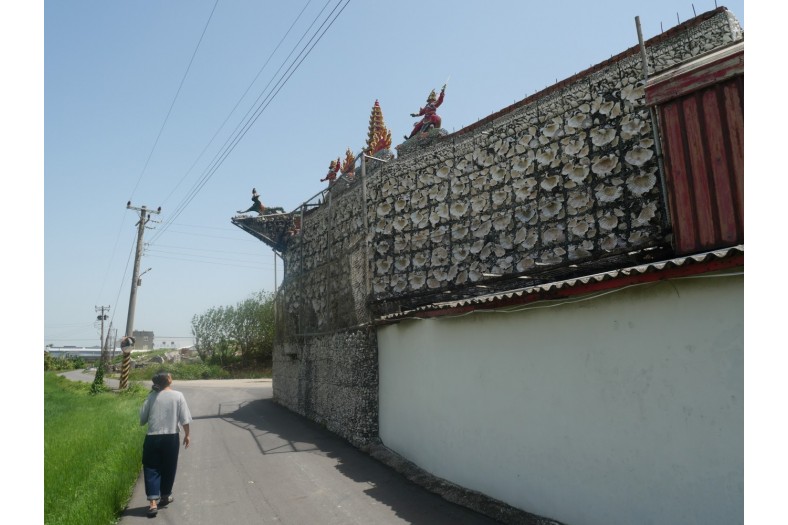
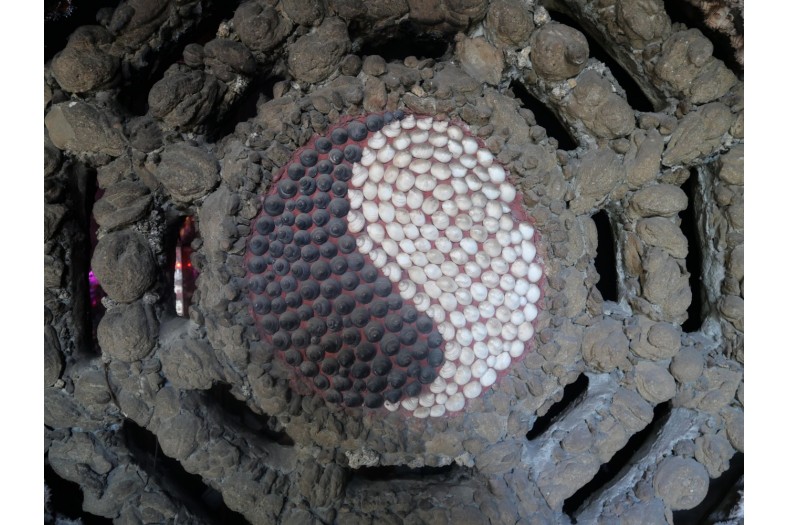
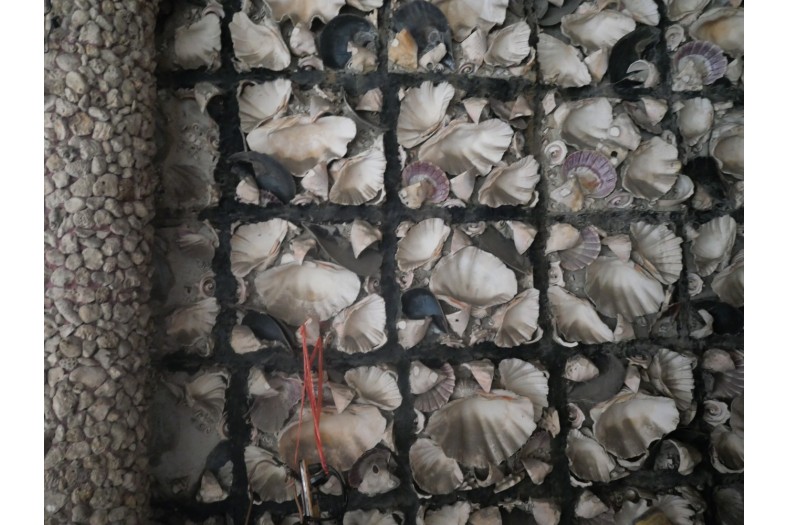
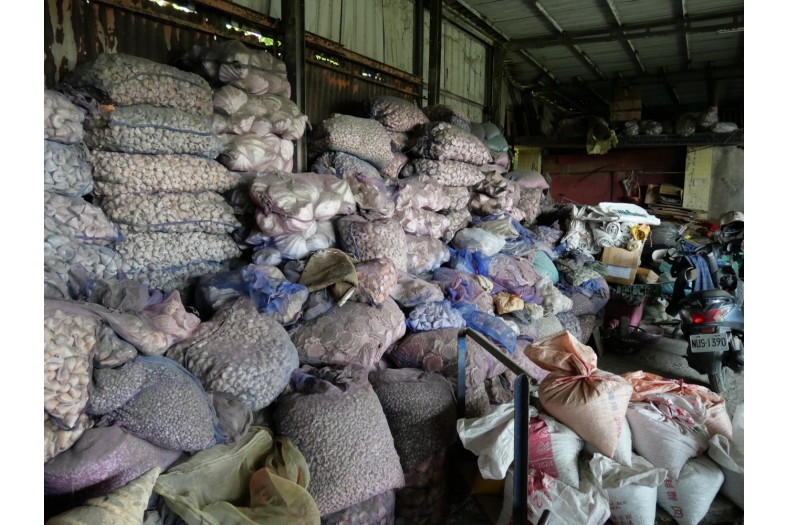
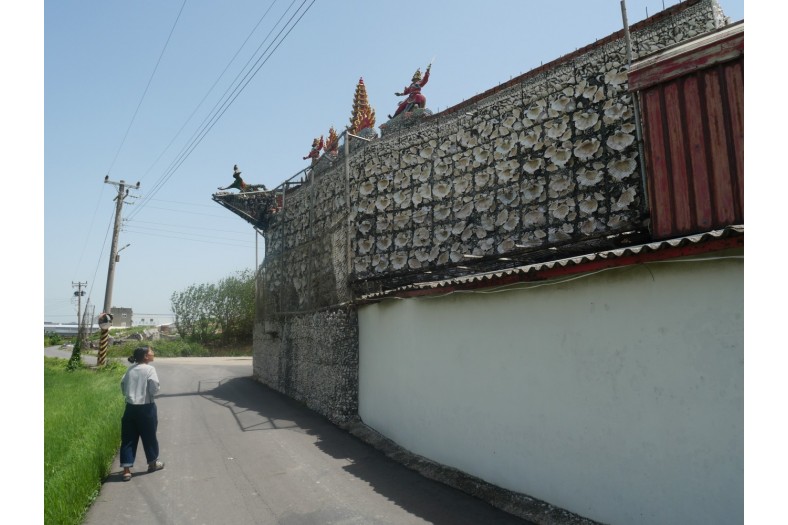
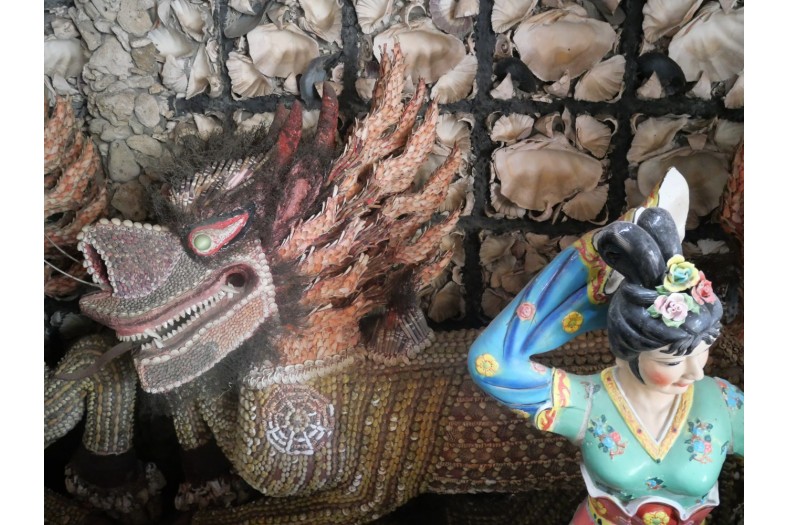
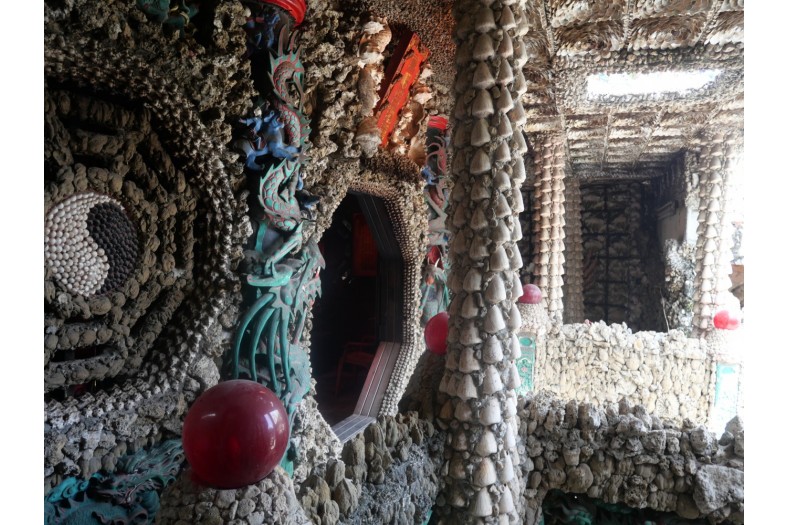
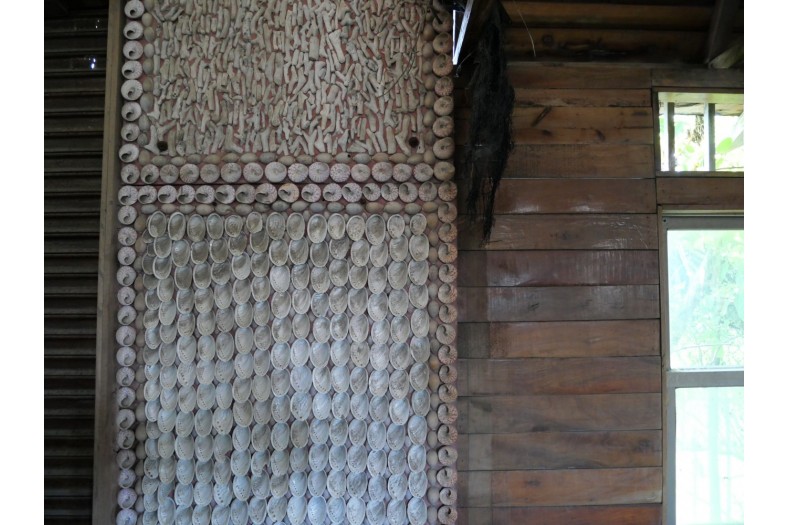
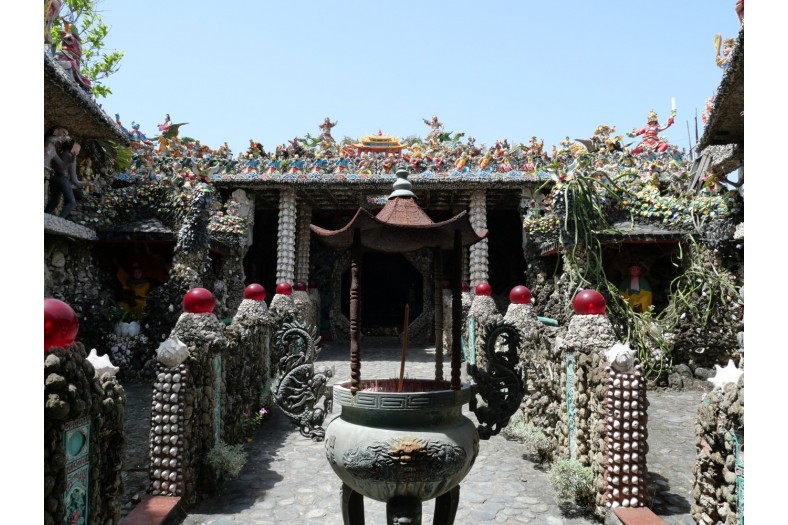
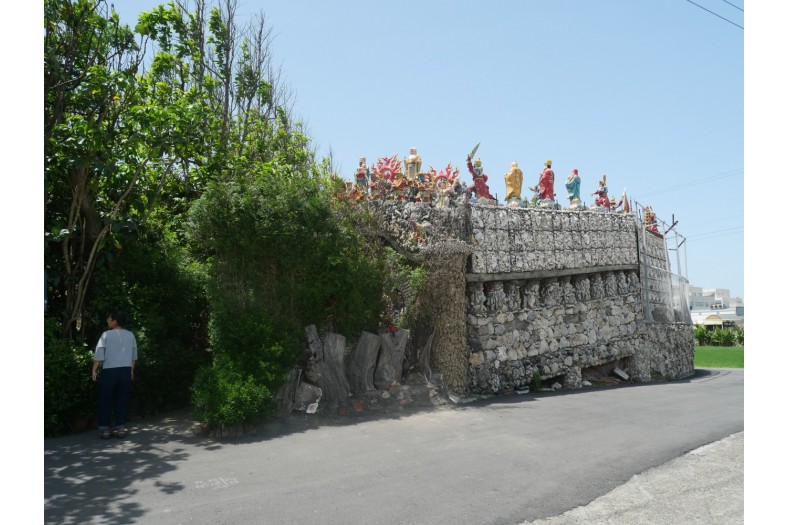
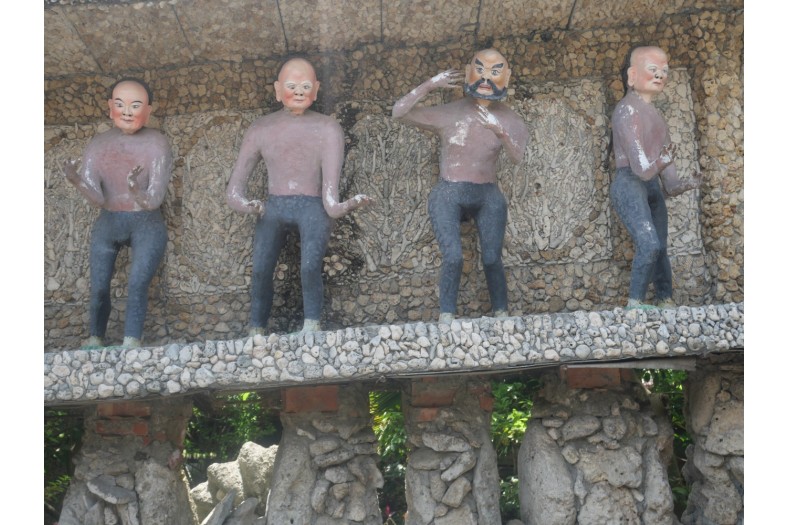
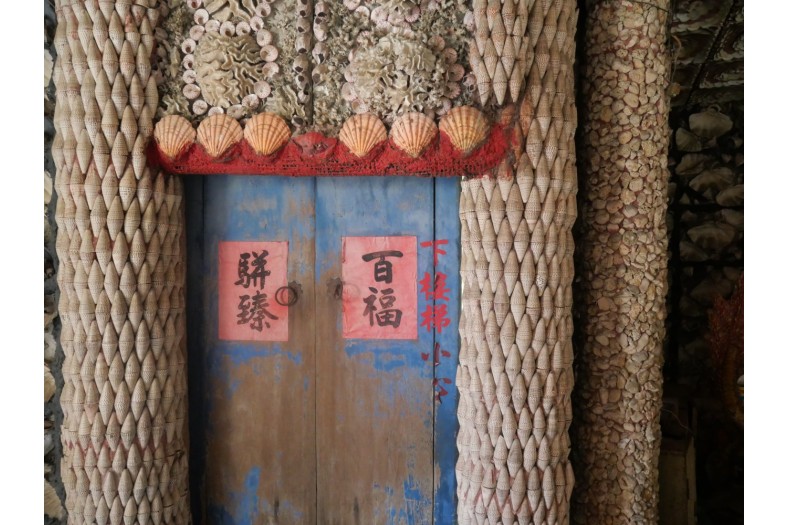
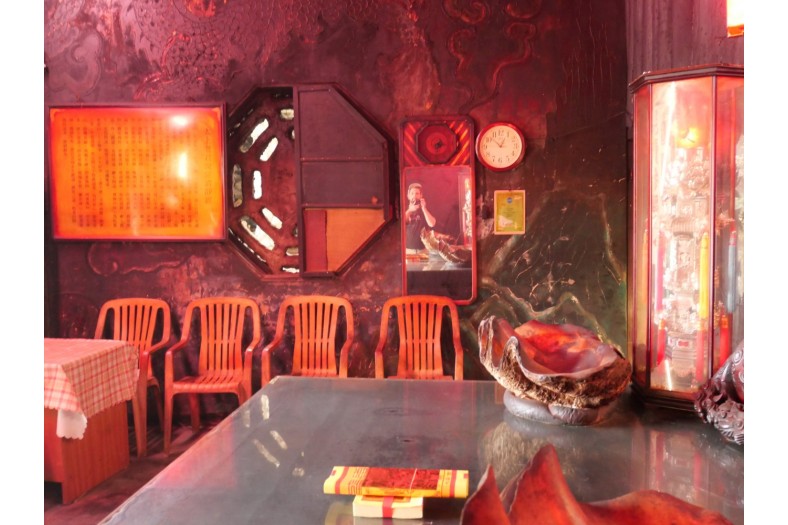
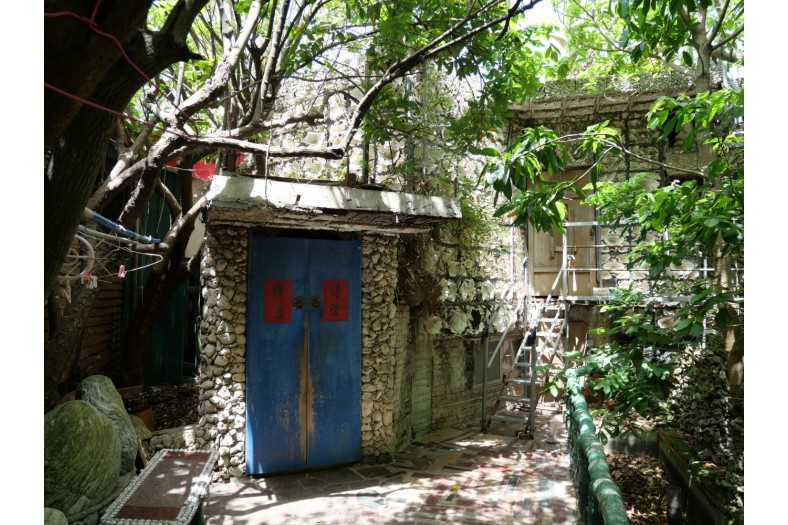
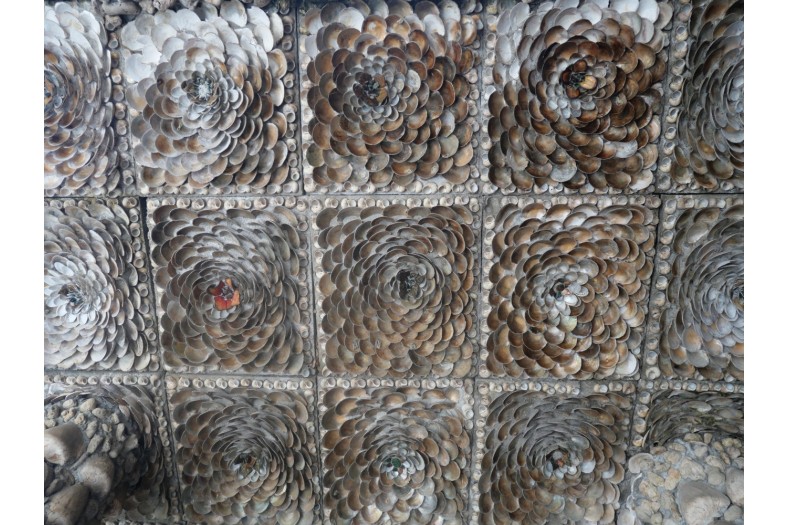
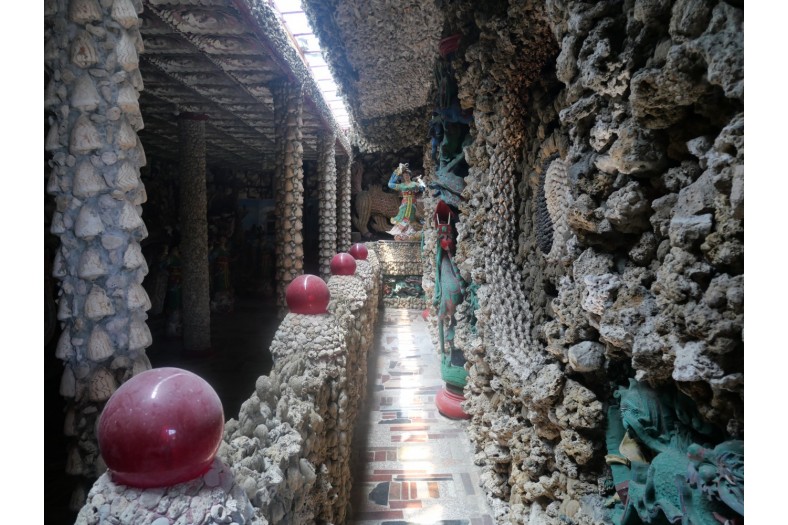
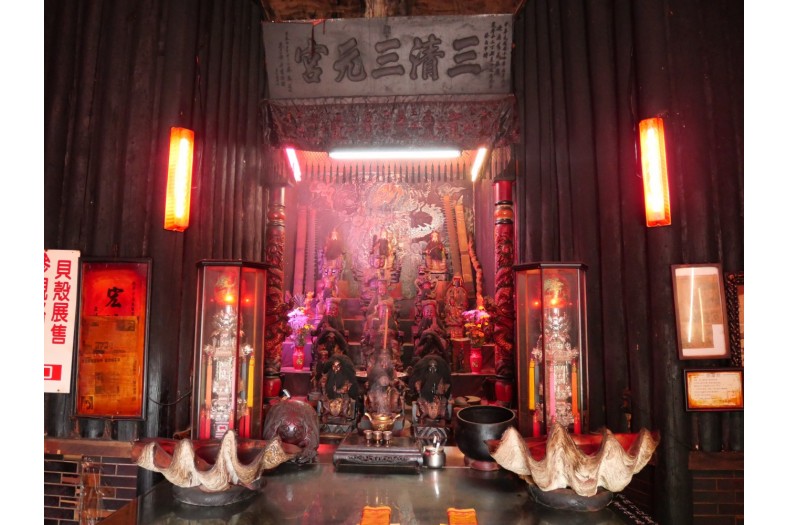
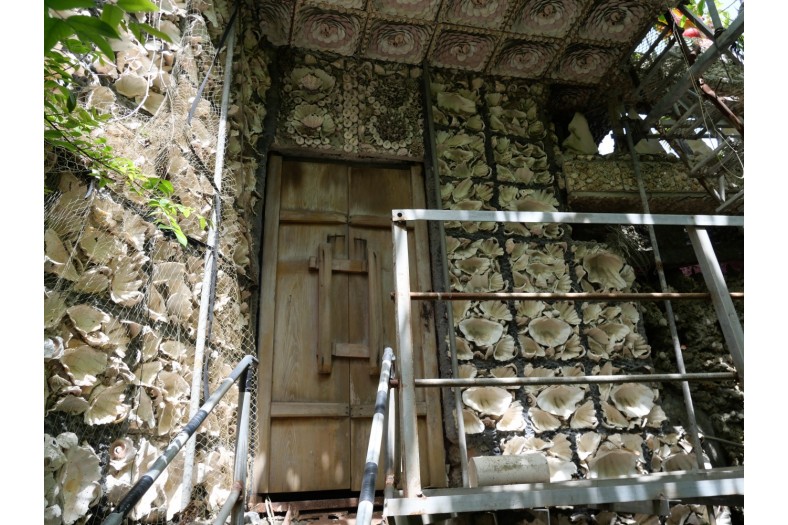
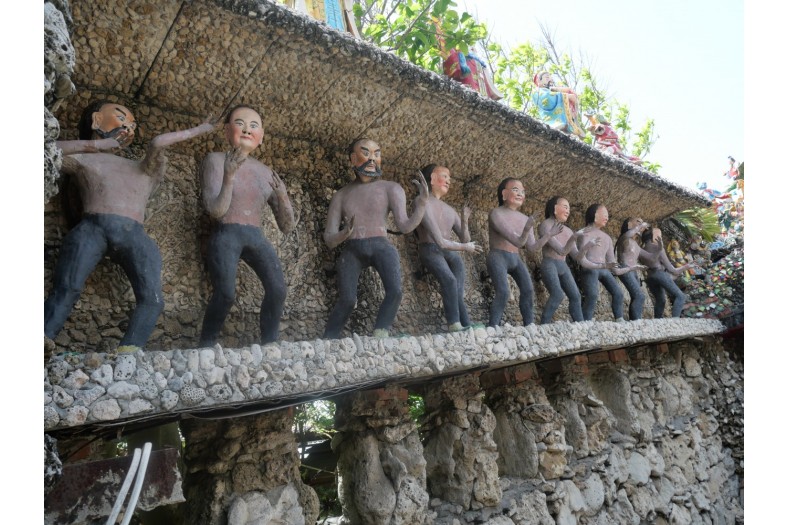
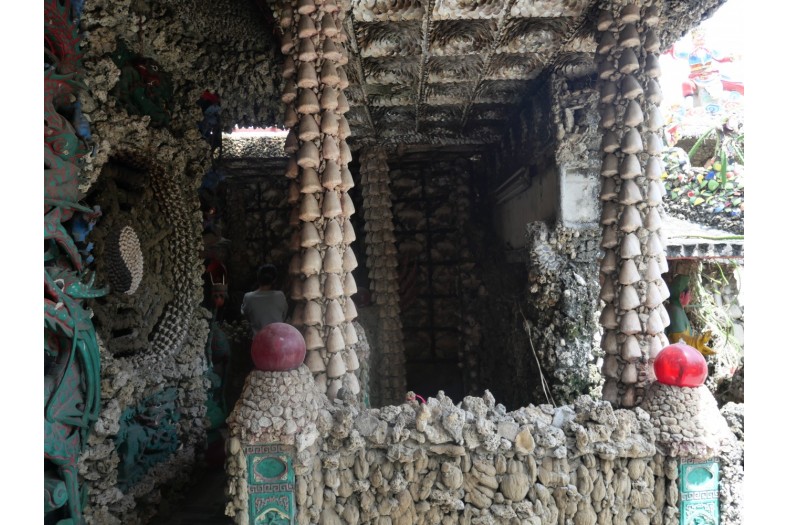
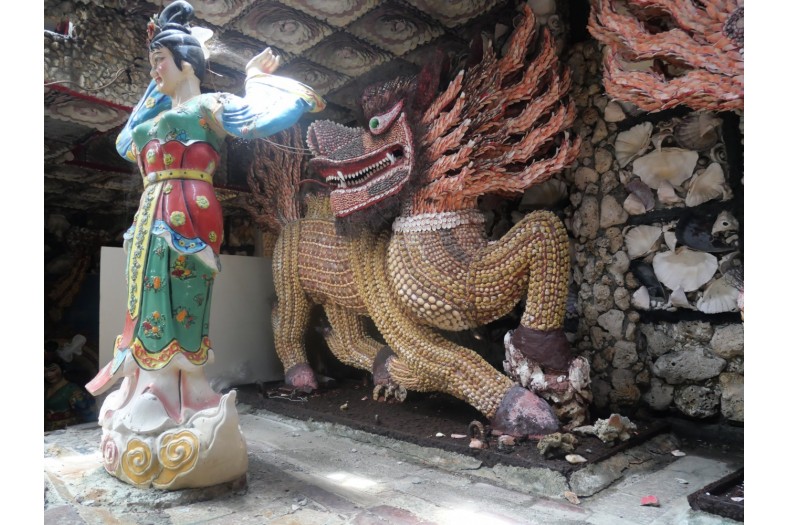
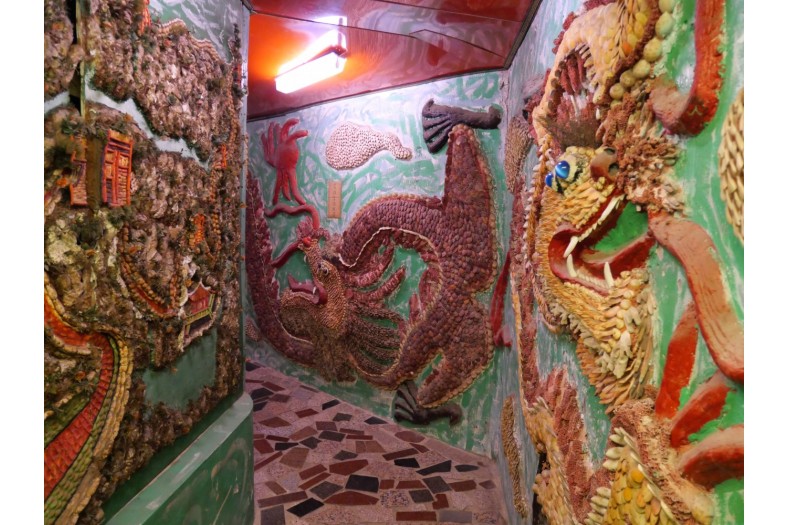
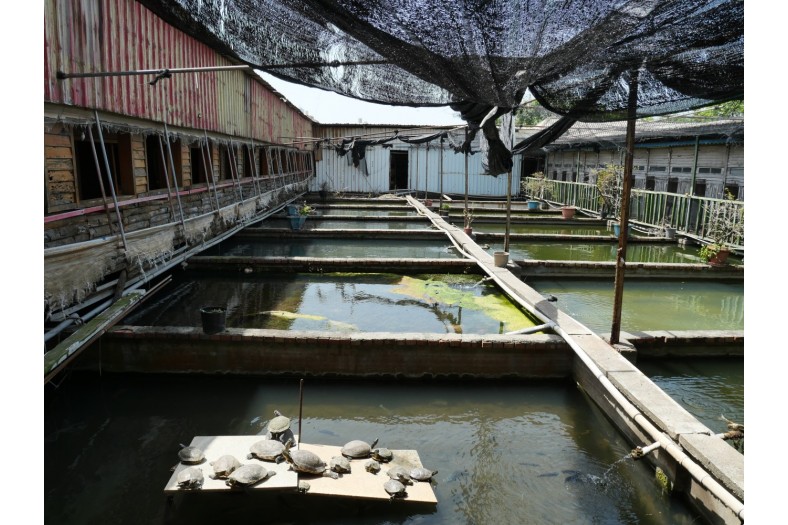
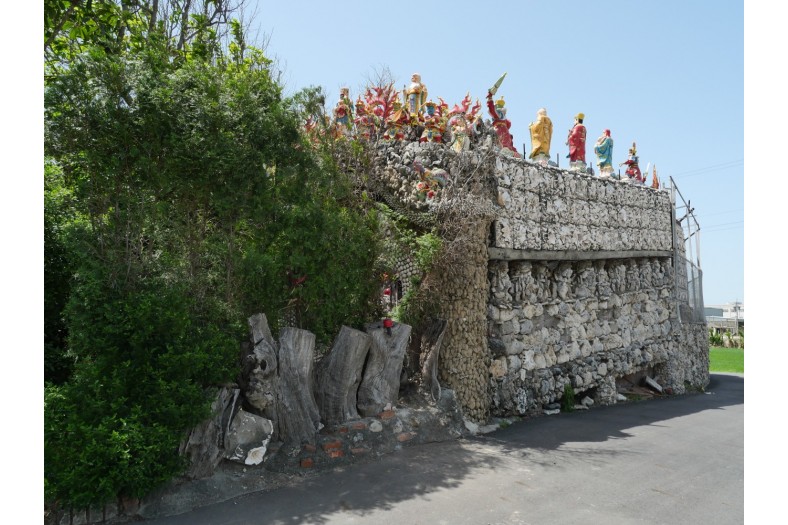

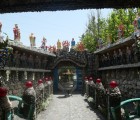
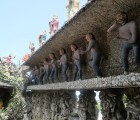
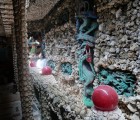
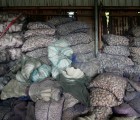
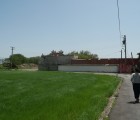
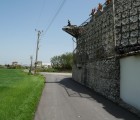
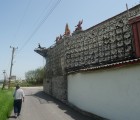
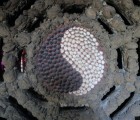
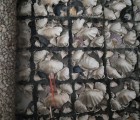
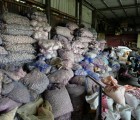
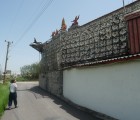
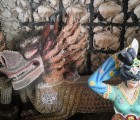
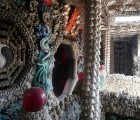
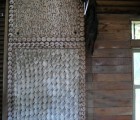
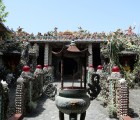
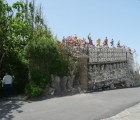
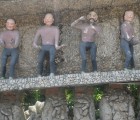
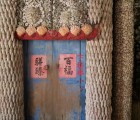
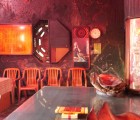
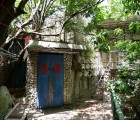
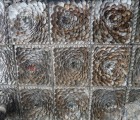
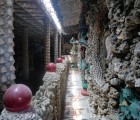
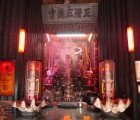
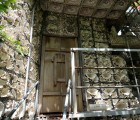
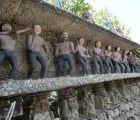
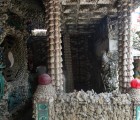
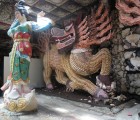
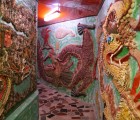
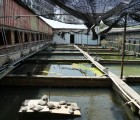
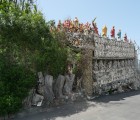
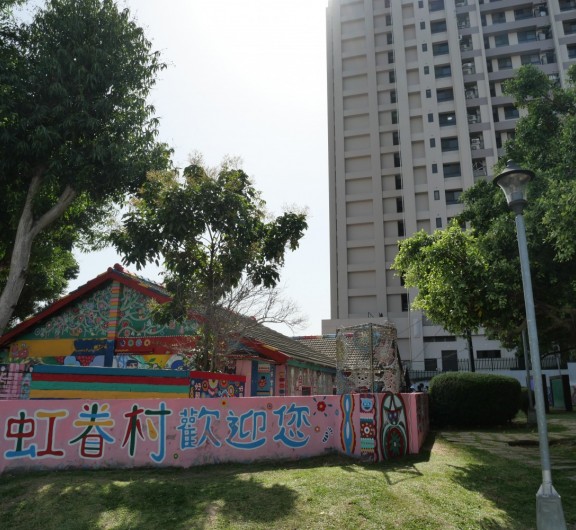

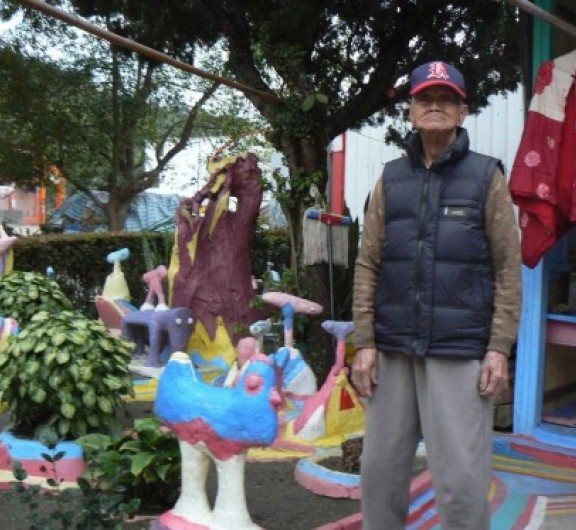

Post your comment
Comments
No one has commented on this page yet.